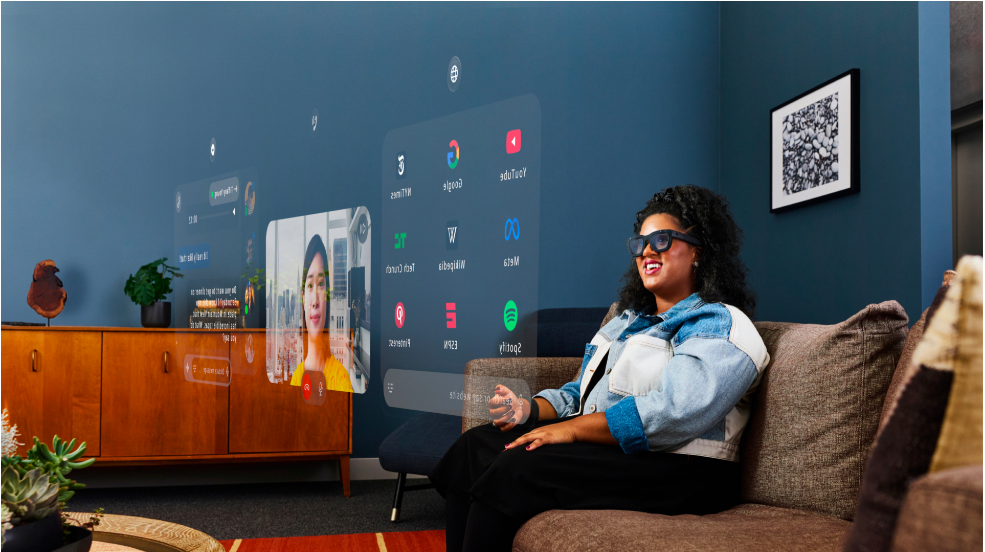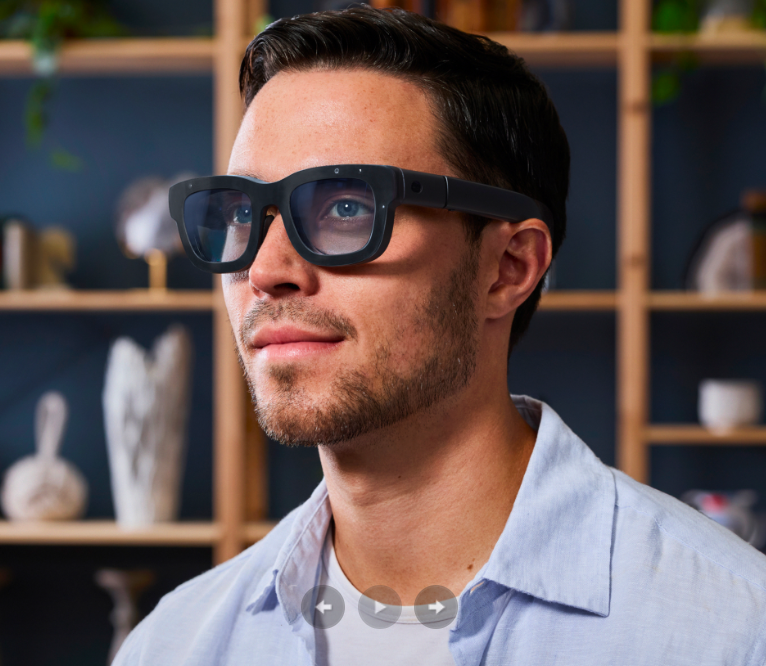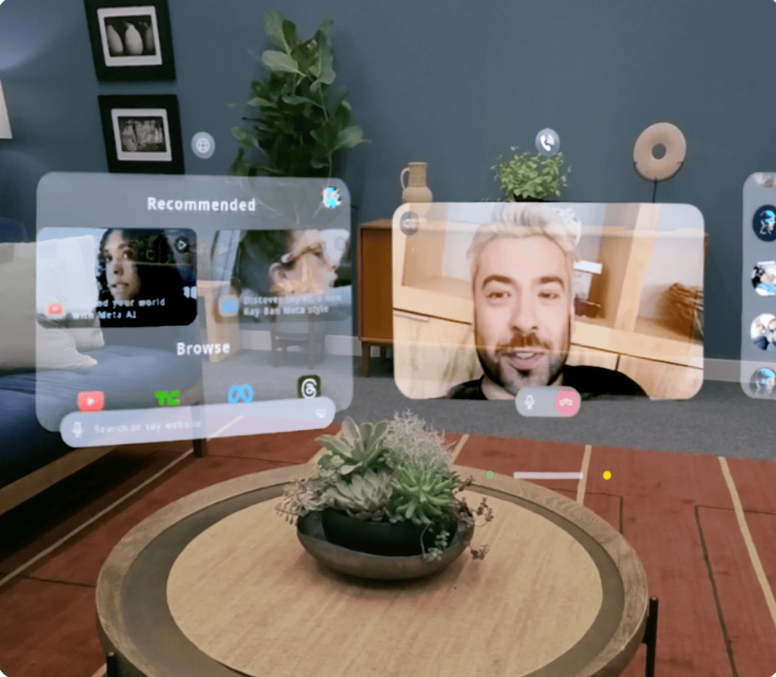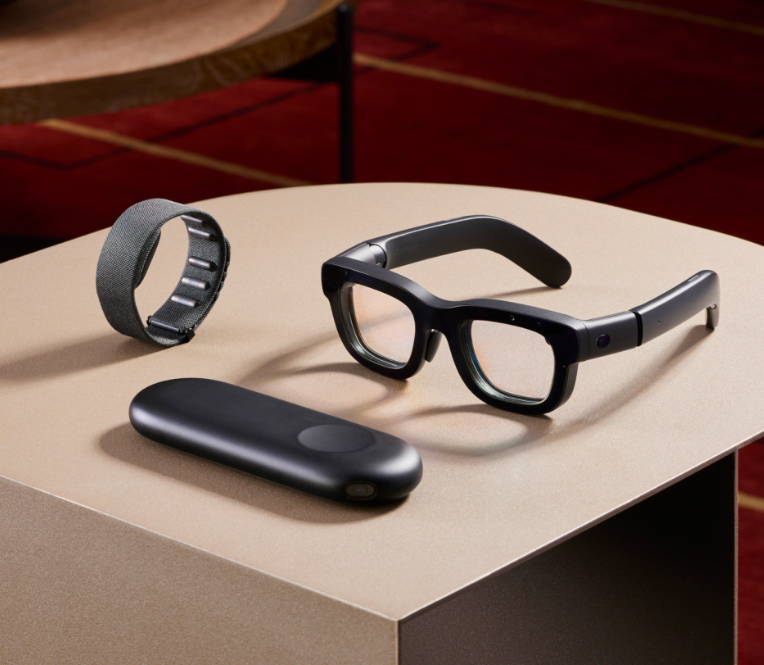
Takeaways
-
Today, we unveiled Orion, previously codenamed Project Nazare, which we believe is the most advanced pair of AR glasses ever made.
-
Orion combines the look and feel of a regular pair of glasses with the immersive capabilities of augmented reality – and it’s the result of breakthrough inventions in virtually every field of modern computing.
-
We’re giving Meta employees and select external audiences access to Orion, so our team can learn, iterate and build towards our consumer AR glasses product line.
Five years ago, we announced to the world that we were building AR glasses. We don’t think people should have to make the choice between a world of information at your fingertips and being present in the physical world around you.
That’s why today, we’re unveiling Orion, which we believe is the most advanced pair of AR glasses ever made. Orion bridges the physical and virtual worlds, putting people at the center so they can be more present, connected and empowered in the world.
Why Augmented Reality Glasses?
There are three primary reasons why AR glasses are key to unlocking the next great leap in human-oriented computing.
-
They enable digital experiences that are unconstrained by the limits of a smartphone screen. With large holographic displays, you can use the physical world as your canvas, placing 2D and 3D content and experiences anywhere you want.
-
They seamlessly integrate contextual AI that can sense and understand the world around you in order to anticipate and proactively address your needs.
-
They’re lightweight and great for both indoor and outdoor use, and they let people see each other’s face, eyes and expressions.

That’s the north star our industry has been building towards: a product combining the convenience and immediacy of wearables with a large display, high-bandwidth input and contextualized AI in a form that people feel comfortable wearing in their daily lives.
The Evolution of Smart Glasses
Ray-Ban Meta glasses have demonstrated the power of giving people hands-free access to key parts of their digital lives from their physical ones. We can talk to a smart AI assistant, connect with friends and capture the moments that matter – all without ever having to pull out a phone.
Yet while Ray-Ban Meta opened up an entirely new category of display-less glasses super-charged by AI, the XR industry has long dreamt of true AR glasses – a product that combines the benefits of a large holographic display and personalized AI assistance in a comfortable, all-day wearable form factor. Orion rises to the challenge.
Groundbreaking AR Display in an Unparalleled Form
We’ve been hard at work for years to take the incredible spatial experiences afforded by VR and MR headsets and miniaturize the technology necessary to deliver those experiences in a pair of lightweight, stylish glasses.
Nailing the form factor, delivering holographic displays, developing compelling AR experiences, creating new human-computer interaction (HCI) paradigms – and doing it all in one cohesive product – is one of the most difficult challenges our industry has ever faced. It was so challenging that we thought we had less than a 10% chance of pulling it off successfully. Until now.
Orion is a feat of miniaturization – the components are packed down to a fraction of a millimeter. Dozens of innovations were required to get the design down to a contemporary form that you’d be comfortable wearing every day.
Orion has the largest field of view in the smallest AR glasses form to date. That field of view unlocks truly immersive use cases for Orion, from multitasking windows and big-screen entertainment to life-size holograms of people – all digital content that can seamlessly blend with your view of the physical world.

But what makes Orion unique is that it is unmistakably a pair of glasses in both look and feel – complete with transparent lenses. Unlike MR headsets or other AR glasses today, you can still see other people’s eyes and expressions, so you can be present and share the experience with the people around you.
Augmented Reality Experiences
Of course, as with any piece of hardware, Orion is only as good as the things you can do with it. And while it’s still early days, the experiences afforded by Orion are an exciting glimpse of what’s to come.
We’ve got our smart assistant, Meta AI, running on Orion. It understands what you’re looking at in the physical world and can help you with useful visualizations. So you can open up your refrigerator and ask for a recipe based on what’s inside. Or video call a friend while adjusting a digital family calendar as you wash the dishes.

You can take a hands-free video call to catch up with friends and family in real time, and you can stay connected on WhatsApp and Messenger to view and send messages. No need to pull out your phone, unlock it, find the right app and let your friend know you’re running late for dinner – you can do it all through your glasses.
Our teams continue to iterate on the experiences available through Orion today to build new immersive social experiences, and we can’t wait to share what’s next.
A Purposeful Product Prototype
While Orion won’t make its way into the hands of consumers, make no mistake: this is not a research prototype. It’s one of the most polished product prototypes we’ve ever developed, and is truly representative of something that could ship to consumers. Rather than rushing to put it on shelves, we decided to focus on internal development first, which means we can keep building quickly and continue to push the boundaries of the technology, helping us arrive at an even better consumer product faster.

What Comes Next
Beginning today at Connect and continuing throughout the year, we’re opening up access to our Orion product prototype for Meta employees and select external audiences so our development team can learn, iterate and build towards our consumer AR glasses product line, which we plan to begin shipping in the near future.
And now that we’ve shared Orion with the world, we’re focused on a few things:
-
Tuning the AR display quality to make the visuals even sharper
-
Optimizing wherever we can to make the form factor even smaller
-
Building at scale to make them more affordable
In the next few years, you can expect to see new devices from us that build on our R&D efforts. Orion isn’t just a window into the future – it’s a look at the very real possibilities within reach today. From Ray-Ban Meta glasses to Orion, we’ve seen the good that can come from letting people stay more present and empowered in the physical world, while tapping into all that the digital world has to offer.
TrendForce 2024 Near-Eye Display Market Trend and Technology Analysis
Release Date:2024 / 07 / 31
Languages:Traditional Chinese / English
Format:PDF
Page:164
|
If you would like to know more details , please contact:
|
















